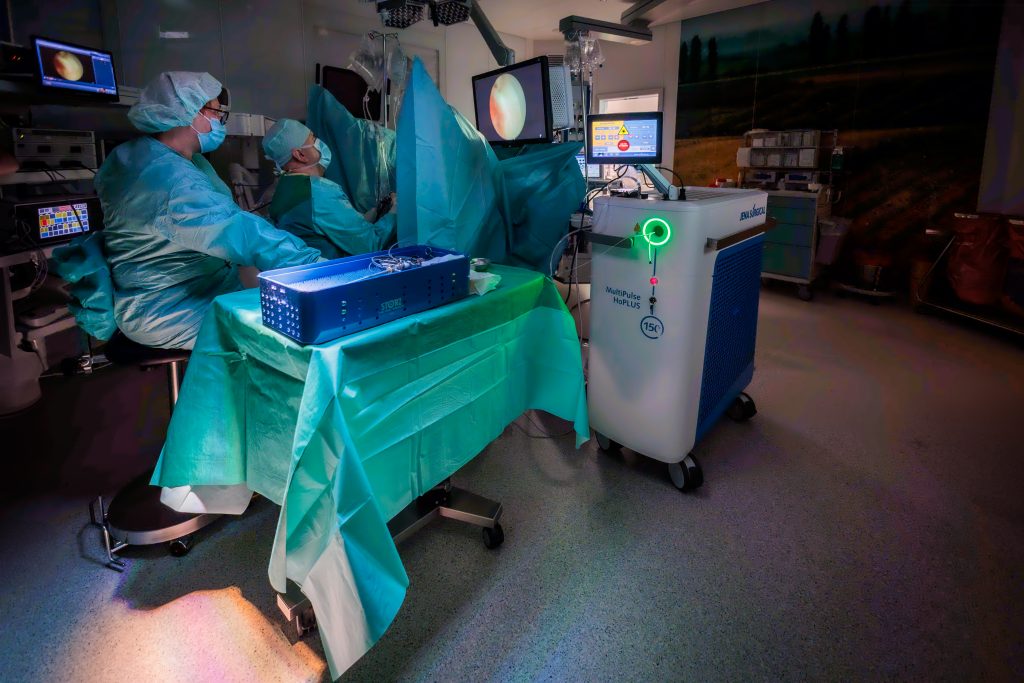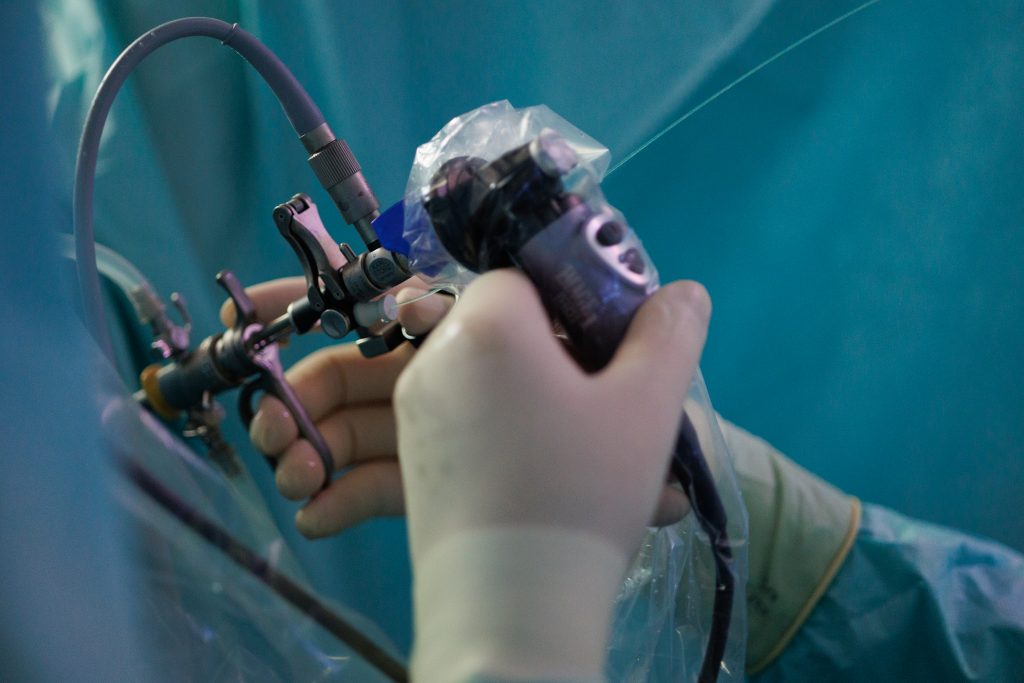By introducing laser prostate surgeries, the International Medical Center Priora in Čepin expands its minimally invasive operative spectrum, making modern surgical procedures accessible throughout the region
Men usually do not like to talk about it, but approximately one in two individuals over the age of 60 experiences difficulty emptying their bladder due to an enlarged prostate. At the International Medical Center Priora in Čepin, a new minimally invasive laser surgical technique has recently been adopted, providing a permanent solution for patients with benign prostatic enlargement.
“Advanced age, an imbalance of androgens and estrogens, and genetic influences are responsible for the accelerated growth of the prostate in many men,” explains Dr. Nikola Zebić, Head of the Department of Urology at Rotthalmünster Hospital in Germany.
Lifestyle factors can also affect prostate enlargement. For example, in China, where diets are low in meat and processed meat products but rich in soy, palm extracts, nettle roots, seeds, and rye extracts prevail, this condition is less common.
“An enlarged prostate pressing on the urethra can be one of several reasons why an excessive amount of urine remains in the bladder during voiding, forcing men to visit the restroom more frequently—even several times at night in advanced stages. In the worst cases, prostate enlargement can lead to complete urinary retention, and those patients must use a catheter until surgery,” Dr. Zebić adds.

Patients with prostate enlargement are typically managed initially with conservative medical therapy. “In severe, advanced cases, surgery is essential; otherwise, the patient would remain catheter-dependent and vulnerable to recurrent infections,” says Dr. Zebić, who has 28 years of clinical experience. Over the past decade, he has specialized in minimally invasive laser prostate surgeries and has successfully performed more than 600 of these procedures to date.
Historically, the gold standard for surgical treatment of small and medium-sized prostates was TURP (transurethral resection of the prostate using an electric loop), while large prostates required open surgery via a lower abdominal incision. The advent of laser enucleation techniques—HoLEP (Holmium Laser Enucleation of the Prostate) and ThuLEP (Thulium Laser Enucleation of the Prostate)—has supplanted these older standards, offering minimally invasive solutions both for benign prostatic enlargement of all sizes and for palliative management of prostate cancer patients suffering from severe urinary symptoms.
During laser enucleation, the enlarged prostate tissue (adenoma) is dissected from the prostate capsule using a laser, and the blood vessels in the surgical field are simultaneously coagulated, minimizing bleeding. The enucleated tissue is then temporarily deposited in the bladder. Next, the laser-equipped resectoscope is withdrawn, and a morcellator is introduced through the urethra to fragment and remove the tissue from the bladder. Finally, a catheter is placed. The entire procedure, guided by endoscopic visualization, lasts approximately one to two hours, depending on prostate size.
“As with any surgical intervention, the risk of complications is not zero; however, because this method is minimally invasive, it is safer and gentler than previous techniques,” Dr. Zebić notes.

Laser use dramatically reduces blood loss, enhances the surgeon’s control during the procedure, and virtually eliminates the risk of damaging the muscles responsible for urinary continence or the nerve pathways critical for potency. Patients on anticoagulant therapy can also undergo the operation without complications. Postoperatively, patients typically remain hospitalized for three to four days. With the introduction of these laser prostate surgeries, the International Medical Center Priora in Čepin broadens its minimally invasive surgical offerings and thus facilitates access to cutting-edge procedures across the entire region.